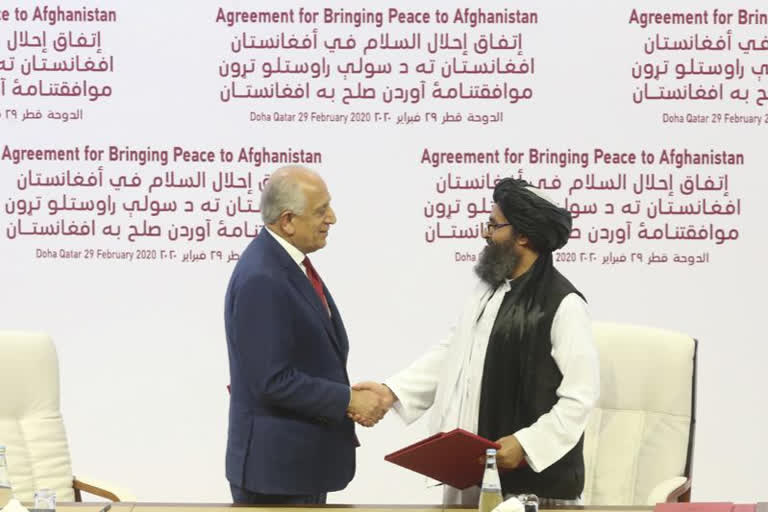Washington (US):As President Donald Trump’s administration signed a peace deal with the Taliban in February 2020, he optimistically proclaimed that “we think we’ll be successful in the end.” His secretary of state, Mike Pompeo, asserted that the administration was “seizing the best opportunity for peace in a generation.”
Eighteen months later, President Joe Biden is pointing to the agreement signed in Doha, Qatar, as he tries to deflect blame for the Taliban overrunning Afghanistan in a blitz. He says it bound him to withdraw U.S. troops, setting the stage for the chaos engulfing the country.
But Biden can go only so far in claiming the agreement boxed him in. It had an escape clause: The U.S. could have withdrawn from the accord if Afghan peace talks failed. They did, but Biden chose to stay in it, although he delayed the complete pullout from May to September.
Chris Miller, acting defense secretary in the final months of the Trump administration, chafed at the idea that Biden was handcuffed by the agreement. “If he thought the deal was bad, he could have renegotiated. He had plenty of opportunities to do that if he so desired,” Miller, a top Pentagon counterterrorism official at the time the Doha deal was signed, said in an interview.
Renegotiating, though, would have been difficult. Biden would have had little leverage. He, like Trump, wanted U.S. troops out of Afghanistan. Pulling out of the agreement might have forced him to send thousands more back in.
He made that point Monday, saying in a televised address from the White House that he would not commit to sending more American troops to fight for Afghanistan’s future while also harkening back to the Trump deal to suggest that the withdrawal path was predetermined by his predecessor.
“The choice I had to make, as your president, was either to follow through on that agreement or be prepared to go back to fighting the Taliban in the middle of the spring fighting season,” Biden said.
Read: Afghans crowd airport as Taliban patrols streets
The Taliban takeover, far swifter than officials from either administration had envisioned, has prompted questions from even some Trump-era officials about whether the terms and conditions of the deal — and the decisions that followed after — did enough to protect Afghanistan once the U.S. military pulled out.
The historic deal was always high-wire diplomacy, requiring a degree of trust in the Taliban as a potential peace partner and inked despite skepticism from war-weary Afghans who feared losing authority in any power-sharing agreement.
“The Doha agreement was a very weak agreement, and the U.S. should have gained more concessions from the Taliban,” said Lisa Curtis, an Afghanistan expert who served during the Trump administration as the National Security Council’s senior director for South and Central Asia.
She called it “wishful thinking” to believe that the Taliban might be interested in lasting peace. The resulting agreement, she said, was heavily weighted toward the Taliban, contributed to undermining Afghan President Ashraf Ghani — he fled the country Sunday and is now in the United Arab Emirates — and facilitated the release of 5,000 Taliban prisoners without a commensurate concession from the Taliban.
“They wanted U.S. forces out, and they wanted to take over the country militarily, and they believed that they could do that,” Curtis said of the Taliban. “That was just crystal clear.”
